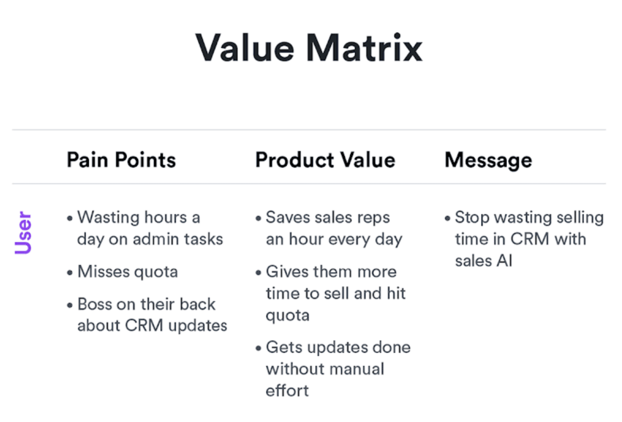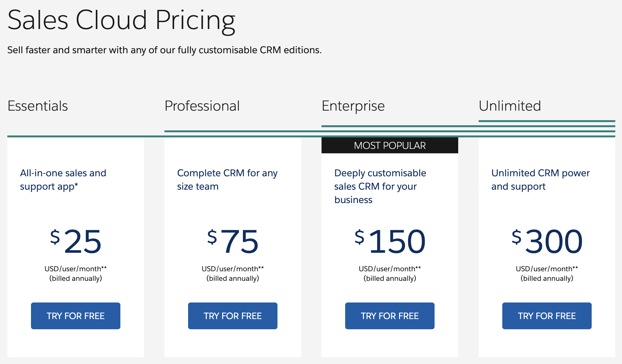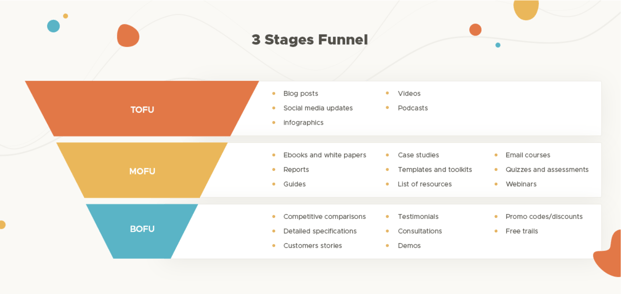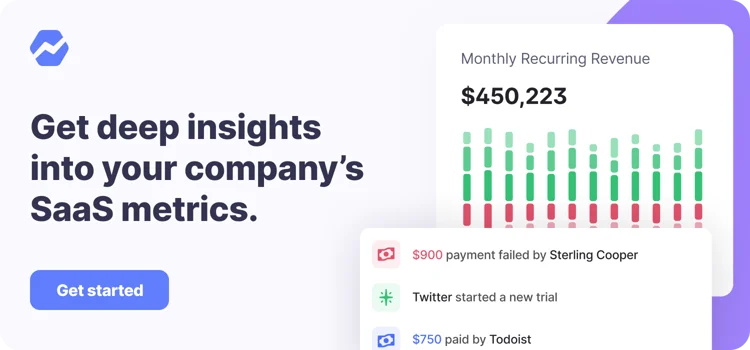Table of Contents

With more than 15,000 SaaS companies operating worldwide, the global SaaS market is constantly growing as new products continue to enter the market. Whether you’re a startup or an established company, launching a new SaaS product isn’t as easy as it was 15 years ago.
You need to have a strategic approach that includes identifying your market fit, developing appropriate positioning and marketing strategies, and measuring performance.
Here’s where having a go-to-market (GTM) strategy comes into the picture. It acts as a product launch blueprint for your business, enabling you to reach customers and sell your product more effectively.
Here’s how you can create an effective GTM strategy for your SaaS product.
Leading SaaS and subscription businesses rely on Baremetrics to track the success of product launches, essential business metrics, and more. Start your free trial today.
Why Is an Effective Go-to-Market Strategy Important for Any Startup?
Before delving into the importance of a GTM strategy, let’s discuss the types of markets. Most markets fall into the following types:
- Thriving market
- New market
In a thriving market, customers have a well-defined need, and there are a few leaders offering stable product choices. The scope for innovation is minimal, and even if it happens, it is rarely game-changing. Take the restaurant business, for example. A few selected names, such as Starbucks, McDonald’s, and Domino’s, have dominated the space for decades.
In a new market, innovation is the key. Take the smartphone market, for instance. Every year, companies need to develop new features and specifications, or else they’ll be outdone by their competitors.
SaaS falls into the new market, where companies that chase product innovation can get a first-mover advantage and redefine the entire market.
1. Product innovation isn’t enough
Back in the day, when the SaaS industry was in its early stages, product innovation was sufficient for SaaS companies. Not many products existed, and a company with a revolutionary product could easily get eyeballs and new consumers.
Things have changed now. Users are more informed than ever, and product innovation alone isn’t sufficient to engage customers and drive conversions. While product innovation can get you a seat at the table, you’ll need a well-devised GTM strategy to introduce your product to the market, reach customers, and get sales.
A GTM strategy can work wonders for SaaS businesses because it lays out a complete blueprint of launching a product, delivering it to the customer, and generating revenue from it.
2. A GTM strategy helps you put your best foot forward
Let’s say product innovation is your core strength. You have a highly skilled and competent team that keeps coming up with new product ideas. But what if you don’t have a great marketing team that can turn your product’s features into benefits and communicate them to the right audience?
Or, what if you have a fantastic marketing team that generates quality leads, but your sales team isn’t competent enough to convert them into high-paying customers?
Perhaps you have an excellent sales team that brings in new customers, but your customer service team isn’t able to deliver quality customer service, resulting in a high churn rate.
For your SaaS product to succeed, you need to tick all the boxes. You need an amazing product with an effective marketing, sales, and pricing strategy supported by user-centric customer service.
What makes a GTM strategy so important and unique is that it helps you put your best foot forward in all these departments, thereby escalating the chances of the product’s success. Furthermore, it enables you to build financial models, measure a product’s success, identify scope for improvement, and adapt to market trends.
What Does a Go-to-Market Strategy Consist of?
The GTM strategy is unique to each company and product; however, certain elements are common in each GTM strategy. These include:
- Target audience and SaaS product offering
- Product-market fit
- Market landscape and competition
- Marketing and distribution strategy
- Sales strategy
- Custom experience strategy and a customer funnel
Now that you have learned about the importance of key elements of a GTM strategy, let’s look at a step-by-step process of creating a GTM strategy that sets your product up for success.
be honest
How well do you know your business?
Get deep insights into MRR, churn, LTV and more to grow your business
Understand Your Product and Its Need in the Market
The primary step in any GTM strategy is to determine where your product would fit in the market. This step is also known as determining your product-market fit. No market need is one of the biggest reasons why startups fail.
Consider 101 Studios, for example. 101 Studios had a great idea – they produced video games to simplify complex learning concepts for school students. The idea was to create a line of fun-to-play games that would also help players enhance their knowledge on different topics. While the concept was great, people weren’t just willing to pay for an edutainment product.
Therefore, it is critical to understand the need for your product before even entirely developing it.
You can realize your product-market fit by answering the following questions:
- What problems does my product solve?
- Whose problems does the product solve?
- Is this the right time to launch the product in the market?
- Are people willing to pay for this product?
Once you understand your product-market fit, create your minimum viable product (MVP) prototype and give free access to potential customers. Get feedback from them to realize if your product will succeed.
You can use the 40% rule to test the viability of your product. Ask your users how they would feel if they could no longer use the product? Give them four options:
- Extremely disappointed
- Somewhat disappointed
- Not disappointed
- I don’t use the product anymore
If more than 40% of responses are “extremely disappointed” and/or “somewhat disappointed,” you are on the right track.
Understand Your Target Audience
The next important step after verifying the demand for your product is to identify and understand your target audience. There are three levels of target markets for SaaS businesses:
- Small business
- Mid-level companies
- Large enterprises
Don’t try to attract all types of consumers, as you’ll risk presenting yourself too thin. You can expand your customer base after establishing yourself as a renowned SaaS company. But if you are in the early stages, stay focused on a single target market.
How Can Your Product Help the Target Audience?
The next step is to establish your unique value proposition, which, simply put, means how your product can help your target audience in a way that no other product can. A customer value matrix is an effective approach to highlighting your product’s value.

Source: Blog Hubspot
It comprises three sections:
- Pain points: The pain points are the problems your potential customers are facing. For instance, you discover that small business owners are spending a lot of time on creating, sending, and tracking invoices.
- Product value: The product value is how your product solves the problems of your potential customers. For instance, your product can be a billing and invoicing software solution that automates the invoice workflow process.
- Message: The message is how you pitch your product value to the potential customer. For example, your message could look like, “Save hundreds of hours every year and enhance your invoicing accuracy with our invoicing tool.”
Develop Marketing and Sales Strategies
Having a streamlined marketing, sales, and distribution plan is essential, regardless of whether you are selling to small businesses or enterprises. Here’s how you can develop these strategies.
Marketing strategy
Your marketing strategy should essentially include how you intend to position your brand and product in the market and which channels you want to choose.
1. Brand Positioning
Let’s briefly discuss brand positioning by comparing two prominent names in the SaaS industry: SAP Technologies and HubSpot.
When you visit the SAP website, you’ll notice that SAP positions itself as a highly professional and specialized industry leader in the enterprise technology space. Their positioning reflects in everything from their web design to web copy to color palette.
HubSpot’s website, on the other hand, gives a youthful, energetic, and approachable aura. In addition to establishing expertise in sales and marketing, HubSpot tries to position itself as a friendly and easy-going company.
You also need to decide how you want people to perceive you. Do you want to be a serious and sophisticated company that people look up to for expert advice and thought leadership? Or, do you want to be someone approachable with whom people can interact and engage?
There’s no right or wrong approach to branding, but ensure that you maintain brand consistency across all your communications and channels.
2. Marketing and distribution channels
Talking about channels, most SaaS businesses rely on organic traffic for lead generation (through a free trial or email newsletter sign-ups). Content marketing has proven to be one of the most effective marketing strategies for SaaS companies.
You can also take your content marketing efforts offline with QR codes. You can use a QR code generator to create a QR code and put it up on your offline marketing materials, like billboards or newspaper ads. Link the QR code to your free trial sign-up page. Users can scan the code from their smartphones to visit your website and sign up for your product.
3. Paid advertising
Paid advertising on search engines and social media is another helpful marketing strategy. It can help you reach a larger audience in less time. While organic SEO is highly effective, it takes time. Paid ads allow you to get on-demand traffic to your website.
4. Referral marketing
Finally, SaaS businesses can use referral marketing to increase sales. It involves incentivizing your users and partners for bringing in new customers. The use of referral marketing in the SaaS industry is growing, and rightly so. Referral leads have 2x higher conversion rates and shorter sales cycles.
There are numerous other marketing channels and tactics you can use, such as cold emails, cold calling, direct marketing, and more. But if you’re looking for a starting point, a combination of content marketing, paid advertising, and referral marketing will help you get started.
Definitely check out this seven-step process for creating a SaaS marketing plan for a detailed blueprint.
Pricing and sales strategy
Before developing a sales strategy, you need to devise a pricing strategy for your product. There are several SaaS pricing models, including:
- Flat pricing: One price for all users (e.g., $300 per month)
- Tiered pricing: Multiple plans with increasing pricing (more features for a higher price)
- User-based pricing: Pricing based on the number of users
Most SaaS companies use a combination of tiered and user-based pricing. Salesforce products are a great example of this pricing model. Take a look at Salesforce Sales Cloud pricing.

Source: salesforce.com
Once you have determined your pricing strategy, it’s time to develop a sales strategy. Three sales models are prevalent in the SaaS space:
- Self-serve model: The self-serve model doesn’t require any sales activity, and the existing marketing funnel and marketing collateral drive in relevant inbound leads. As the inbound leads are usually high-intent, with the right marketing mix, this model can drive revenue without a sales-driven approach to conversions, led by strong inbound lead nurturing. This model works well for low-priced products.
- Transaction sales model: This model includes having an inside sales team. The marketing department increases awareness and generates leads, whereas the sales team interacts with the prospects and closes the sales. This model is ideal if your product is priced at the higher end.
- Enterprise model: This model involves having multiple sales and marketing teams and includes numerous interactions and meetings with the decision-makers. This model is ideal for you if you have a pricey product and are targeting enterprises and larger companies i.e. companies of size 500 employees and higher on average.
Build a Sales and Customer Success Funnel
Your SaaS marketing funnel will play a vital role in generating leads and conversions for your product. A marketing funnel comprises three sections:
- Top of the Funnel (TOFU)
- Middle of the Funnel (MOFU)
- Bottom of the Funnel (BOFU)

Source: singlegrain.com
Your marketing campaigns should be specific to each stage of your sales funnel. For instance, you should create how-to guides, blog posts, and explainer videos for TOFU, demonstrations and case studies for MOFU, and pricing information and testimonials for BOFU. Then, you can integrate your sales funnel with your marketing funnel by running paid ads, retargeting campaigns, or email marketing campaigns.
SaaS businesses rely on recurring revenue. Achieving a high customer lifetime value (LTV) is crucial. The LTV you aim for should depend on your customer acquisition cost (CAC). The lower your CAC and the higher your LTV, the faster your business can grow.
Suppose you spend $200 to acquire a customer. You’ll need to earn $200 from that customer to be at break-even, and anything above that will be profits. So, if your average CAC is $200, your average LTV should be more than $200 for you to be profitable.
Now, assume you have a $50/month plan, and a customer on whom you spent $200 signs up for it. You’d need to ensure that the customer stays subscribed to your product for at least four months (4 x $50 = $200), so you can recover your investment. The time for which a user uses your product is directly proportional to the LTV. Hence, SaaS businesses need to focus on retaining customers to increase LTV and profitability.
All the data your startup needs
Get deep insights into your company’s MRR, churn and other vital metrics for your SaaS business.
Create a Framework for Evaluating Product Launch and Performance
95% of new products fail, according to Harvard Business Review (HBR), and it can be due to numerous reasons. Lack of product-market fit is one of them, as discussed earlier. Inadequate pricing, poor marketing, and intense competition are some other reasons why products might fail.
That doesn’t mean your product has any fewer chances of succeeding. However, you need to measure the right metrics to assess the success and performance of your product launch.
Here are key performance indicators (KPIs) you should use to measure the success of your product launch.
1. Launch campaign metrics
- Website traffic, page views, bounce rate
- Advertising metrics
- Leads generated
- News coverage
- Top channels
2. Product adoption metrics
- Product trials
- Customer usage
- User retention
3. Market impact metrics
- Revenue
- Market share
- Competitive win rate
4. Qualitative feedback
- External feedback
- Internal feedback
Evaluate Your GTM Strategy Performance
You have done the heavy lifting by developing and implementing a go-to-market strategy for your product. The final step is to evaluate your GTM strategy and optimize it to improve its performance.
There are various metrics that you can track, such as pipeline coverage, sales team performance, lead conversion rates, etc. But let’s keep the evaluation part as simple as it could get. You only need to track three metrics:
- Customer acquisition cost (CAC)
- Customer lifetime value (LTV)
- Channel-wise spending and revenue
As discussed, if your LTV is higher than your CAC, you’re on the right track. An LTV:CAC ratio of 3:1 is good, but since you’re calculating it for a new product, anything better than 2:1 is fine. If it’s below 2:1, you’ll need to optimize your GTM strategy.
Tracking channel-wise spending and revenue helps you identify which channels are performing the best. For example, if you are spending more than what you are earning on a channel, that channel doesn’t fit your GTM strategy. Contrarily, if a channel is performing significantly better than others, you might want to scale it up.
Conclusion
This guide must have provided you with the tools and knowledge necessary to build a GTM strategy for your product.
One thing to keep in mind is that you shouldn’t unnecessarily complicate your GTM strategy. A GTM strategy is nothing but planning every single element of your product launch process and evaluating it. It’s that simple.
Get the analytics and insights you need to ensure successful product launches with data from Baremetrics. Don’t wait- start your free trial today.


